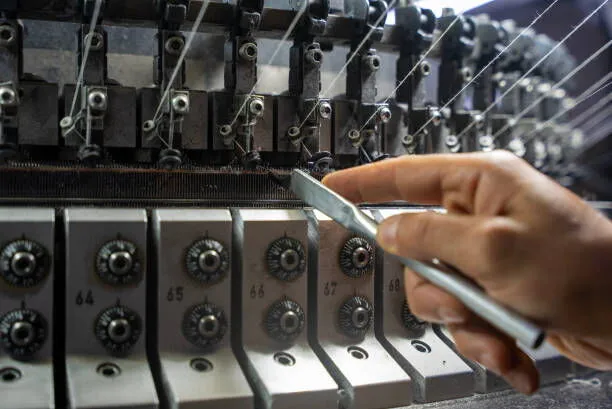Operation Instructions for Circular Knitting Machines
Oct 26, 2024
On this page
Efficient operation of circular knitting machines is crucial for enhancing knitting quality and productivity. Understanding the proper methods of threading, opening cloth, and changing yarn is essential for optimizing machine performance. This article provides a comprehensive guide to the operational procedures for circular knitting machines, offering insights into best practices for both new and experienced operators.

Once the threading is complete, the next phase is to open the cloth. This involves ensuring all components are ready for knitting.
Deactivate the active yarn feeding system.
Open all closed needle tongues.
Remove any loose floating yarn heads to ensure that the knitting needles are clear and ready for use.
Detach the cloth support frame from the machine.
Open all closed needle tongues.
Remove any loose floating yarn heads to ensure that the knitting needles are clear and ready for use.
Detach the cloth support frame from the machine.
Feed the yarn into the hooks through each feed and pull it to the cylinder's center.
After threading all yarns, bundle them together and ensure even tension before tying them securely. Use the winding shaft of the winder to tighten the knot on the winder stick.
Operate the machine at "slow speed" to verify that all needles are open and that yarns are feeding correctly. If necessary, use a brush to assist with the yarn feeding process.
Gradually open the cloth at a low speed. When the fabric reaches a sufficient length, reattach the fabric support frame and guide the cloth evenly through the winding shaft of the fabric winder.
Once the machine is ready for normal weaving, activate the yarn feeding device. Adjust the tension of each yarn evenly using the tensioners, allowing for high-speed operation during the weaving process.
Occasionally, operators will need to change the yarn due to depletion or when switching to a different material.
Understanding the correct procedure is vital for maintaining continuity in production.
Detach the empty yarn cylinder from the machine and carefully tear off the remaining yarn.
Take the new yarn cylinder and check its label. Verify that the batch number matches the intended specifications.
Insert the new yarn cylinder into the holder designed for cylinder yarn. Pull the yarn head through the yarn guide ceramic eye on the holder, ensuring smooth and unrestricted flow of the yarn.
The operation of circular knitting machines relies heavily on the correct execution of threading, opening cloth, and yarn changing processes. By adhering to these guidelines, operators can enhance the efficiency and quality of their knitting operations. Continuous training and attention to detail will lead to improved productivity and greater machine longevity. Understanding these procedures not only ensures optimal performance but also empowers operators to troubleshoot potential issues effectively, thereby maintaining the high standards expected in knitting production.
Next: How to Choose Your First Circular Knitting Machine
Previous: Single Jersey Fabric vs. Interlock Fabric: Key Differences
About Us
We have been committed to manufacturing all types of circular knitting machines with great quality and reasonable price for a long time. Our professional team is highly specialized and problem-solving oriented. We put the most effort into meeting your knitting demands, achieving a win-win situation.
Categories
Useful Links